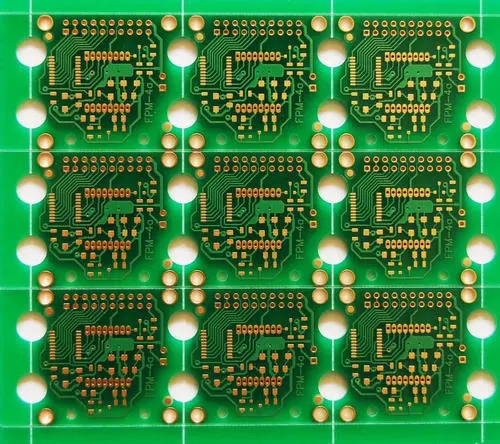The general guidelines for PCB thermal design are as follows:

(1) During layout design, space should be reserved as much as possible between components and between components and chips to facilitate ventilation and heat dissipation.
(2) Keep components with low temperature specifications away from components with high temperature specifications. E.g:
CPU:100 degree Celsius HDD:60 degree Celsius
N/B:105 degree Celsius FDD Disk:51.5 degree Celsius
S/B:85 degree Celsius CDROM:60 degree Celsius
VGA:85 degree Celsius PCMCIA CARD:65 degree Celsius
C/G:85 degree Celsius Other ICs:70 degree Celsius
(3) For ICs and components estimated to have heat dissipation problems, sufficient space should be reserved for placing improvement solutions. For example: Do not have any taller parts around ICs to facilitate the placement of metal heat sinks to dissipate heat in the future.
(4) Large components (such as CPU) and cooling modules should be as close as possible to the edge of the CPU to reduce thermal resistance.
(5) The medium (TIM, thermal interface material) between the heat dissipation module and the CPU has a great influence on the efficiency of the module. Materials with low thermal resistance should be selected, or even phase change materials.
(6) The contact pressure between the group and the heat-dissipating component should be as large as possible within the specifications, and it should be confirmed that the two contact surfaces are connected intact, flat and even.
(7) The body part of the heat dissipation module should not be too small, and try to enlarge the contact area with the heat pipe, so that the heat of the heating chip can be conducted to the heat dissipation module.
(8) The heat exchange fins in the Thermal module are enlarged in the direction perpendicular to the wind flow, which is more effective than in the parallel direction.
(9) H/P has its limitations in the use of flattening and bending, which should be paid attention to.
(10) The overall flow path design should avoid backflow to reduce wind resistance and noise.
(11) The gap between the outlet of the Module and the outlet of the N/B should be made with a closed flow channel to prevent the hot air from flowing back into the N/B.
(12) The heat dissipation and ventilation design has a large opening rate, and replaces small round holes or meshes with large elongated holes to reduce wind resistance and noise.
(13) Special attention should be paid to the shape and size of the air inlet of the fan, as well as the design of the tongue and involute.
(14) There should be no obstruction within 3mm~5mm outside the air inlet of the fan.
(15) Chips with high calorific value should be placed on the motherboard as much as possible to avoid overheating of the bottom case; if it is necessary to place the chip under the motherboard, the space between the chip and the bottom case should be reserved to make full use of air penetration, gas flow or heat dissipation. Place the solution space.
The above is an introduction to the general guidelines of PCB thermal design. Ipcb is also provided to PCB manufacturers and PCB manufacturing technology.